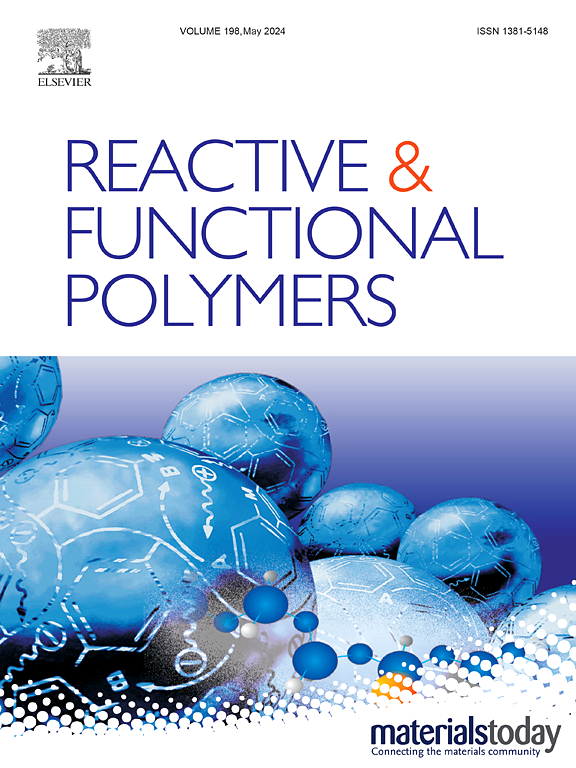Room temperature photolytic C-H insertion of azidoformate for virucidal polypropylene non-woven fabric with enhanced durability
IF 4.5
3区 工程技术
Q1 CHEMISTRY, APPLIED
引用次数: 0
Abstract
Polypropylene non-woven fabrics (PNWs) are widely utilized in sectors such as healthcare and filtration due to their favorable properties, including low density, chemical resistance, and cost-effectiveness. However, their use in personal protective equipment (PPE), particularly during the COVID-19 pandemic, highlighted limitations such as the risk of viral adherence and secondary transmission, as well as concerns regarding single-use waste management. This study presents a method for developing durable antiviral PNWs by covalently grafting Polyquaternium-11 (PQ), a biocompatible cationic polymer, onto PNW surfaces using tri(ethylene glycol)di(azidoformate) as a crosslinker through photolytic C-H insertion at ambient temperature. The process was confirmed via FT-IR, while thermal, crystallinity, and tensile characterization indicated stable integration of PQ without compromising the mechanical properties of the PNW. The modified PNW exhibited significant antiviral and antibacterial performance, achieving 98.97% virus inactivation and 99.20% inhibition of S. aureus. This study demonstrates an effective approach for creating antimicrobial PNWs with potential applications in medical, hygiene, and PPE products.

室温光解C-H插入叠氮甲酸酯用于防病毒聚丙烯无纺布,增强耐用性
聚丙烯无纺布(PNWs)由于其良好的性能,包括低密度、耐化学性和成本效益,被广泛应用于医疗保健和过滤等领域。然而,它们在个人防护装备(PPE)中的使用,特别是在2019冠状病毒病大流行期间,突出了其局限性,例如病毒粘附和二次传播的风险,以及对一次性废物管理的担忧。本研究提出了一种利用三(乙二醇)二(叠氮甲酸酯)作为交联剂,在室温下通过光解C-H插入,将生物相容性阳离子聚合物聚季铵盐-11 (PQ)共价接枝到PNW表面,从而制备持久抗病毒PNW的方法。该过程通过FT-IR得到证实,而热、结晶度和拉伸性能表征表明PQ的稳定集成,而不影响PNW的机械性能。改性后的PNW具有显著的抗病毒和抗菌性能,对金黄色葡萄球菌的抑制率为99.20%,病毒灭活率为98.97%。本研究展示了一种有效的方法来创建抗菌PNWs,在医疗、卫生和个人防护用品中具有潜在的应用前景。
本文章由计算机程序翻译,如有差异,请以英文原文为准。
求助全文
约1分钟内获得全文
求助全文
来源期刊

Reactive & Functional Polymers
工程技术-高分子科学
CiteScore
8.90
自引率
5.90%
发文量
259
审稿时长
27 days
期刊介绍:
Reactive & Functional Polymers provides a forum to disseminate original ideas, concepts and developments in the science and technology of polymers with functional groups, which impart specific chemical reactivity or physical, chemical, structural, biological, and pharmacological functionality. The scope covers organic polymers, acting for instance as reagents, catalysts, templates, ion-exchangers, selective sorbents, chelating or antimicrobial agents, drug carriers, sensors, membranes, and hydrogels. This also includes reactive cross-linkable prepolymers and high-performance thermosetting polymers, natural or degradable polymers, conducting polymers, and porous polymers.
Original research articles must contain thorough molecular and material characterization data on synthesis of the above polymers in combination with their applications. Applications include but are not limited to catalysis, water or effluent treatment, separations and recovery, electronics and information storage, energy conversion, encapsulation, or adhesion.
 求助内容:
求助内容: 应助结果提醒方式:
应助结果提醒方式:


